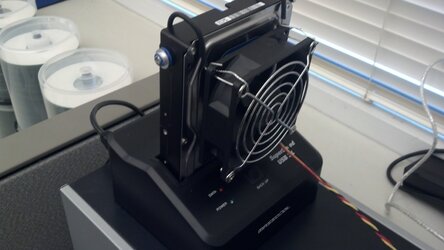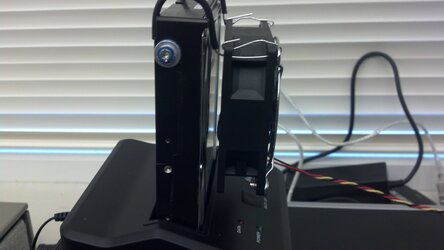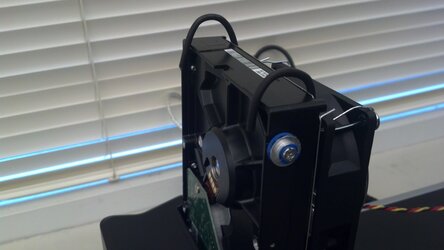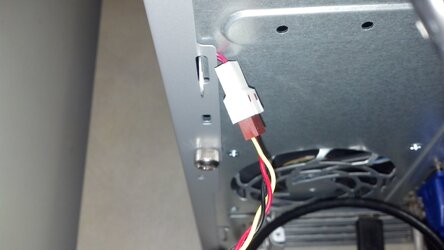10XTriplet
Disabled
- Joined
- Aug 20, 2012
I'd figure I would post this here. Not extreme cooling by any imagination, but is necessary if you keep it in these things for a few hours at a time as the drive does get hot to the touch.
Its real simple, probably why it works so well. I used large paper clips and bent them so they fit over the hard drive. I then put shrink tubing around the exposed paper clip with some excess to prevent shorting if it ever should happen. I then took 5v power from a unused floppy connector a fished it to the outside of the case and connected the fan... I'm using 5volts because I don't need to blow the drive over, just cool it, and being this close get the job done. The fan is powered only when the computer is on. What do you think?
Its real simple, probably why it works so well. I used large paper clips and bent them so they fit over the hard drive. I then put shrink tubing around the exposed paper clip with some excess to prevent shorting if it ever should happen. I then took 5v power from a unused floppy connector a fished it to the outside of the case and connected the fan... I'm using 5volts because I don't need to blow the drive over, just cool it, and being this close get the job done. The fan is powered only when the computer is on. What do you think?




